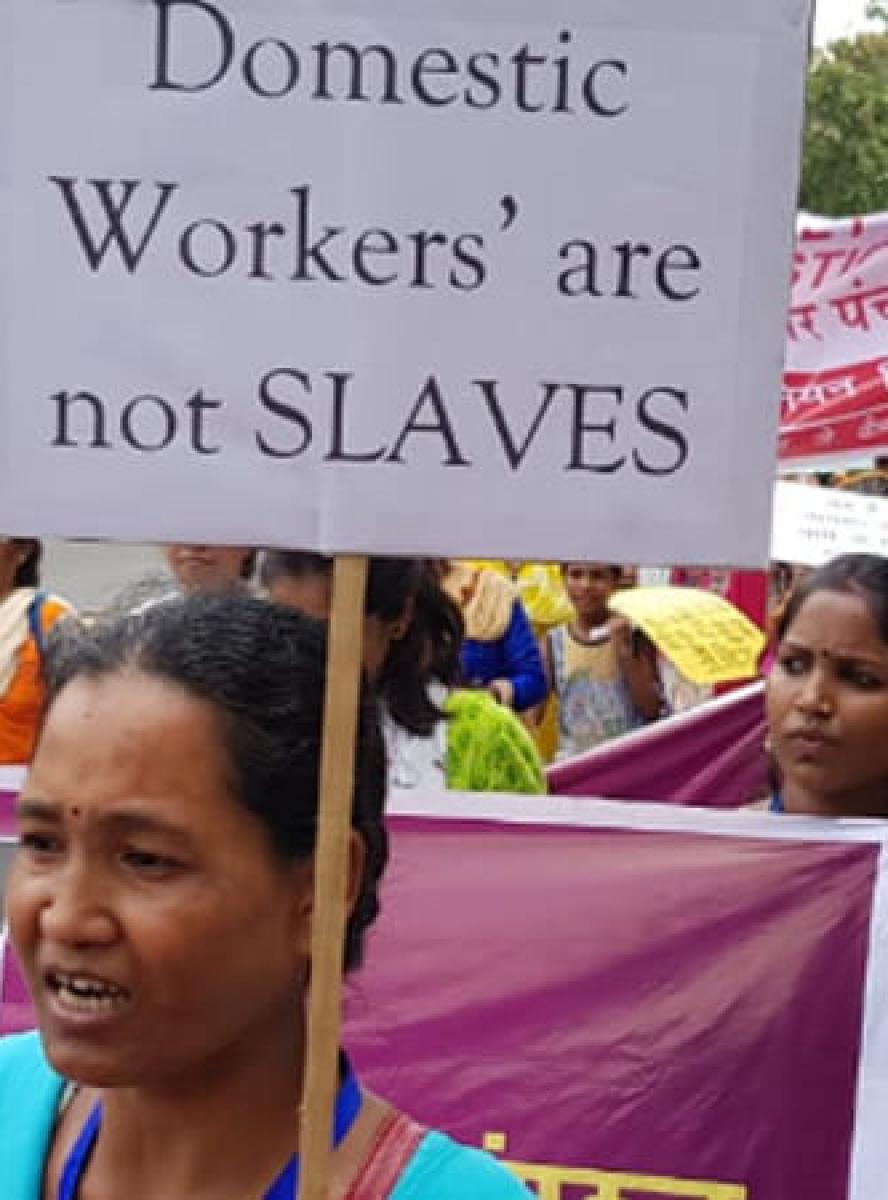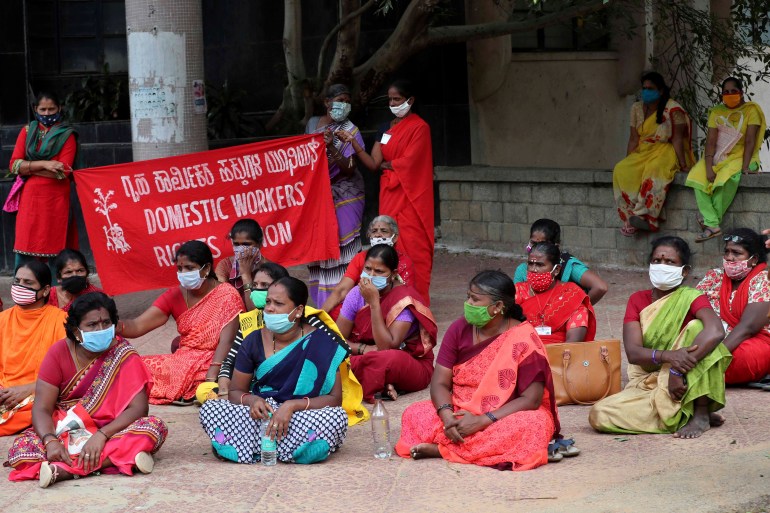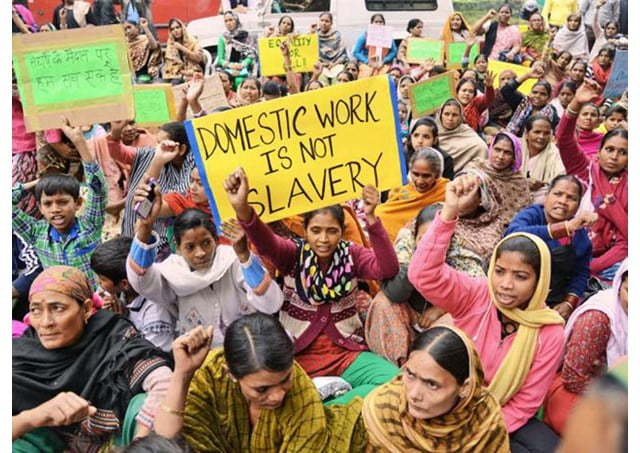When we look into care work and domestic labor through the feminist lens, the first thing we notice is that it is highly gendered and is predominantly performed by women. From the time care work became a topic of discussion among feminist scholars, it has been studied mainly through the gender perspective. It has become an established fact that women have been carrying the burden of care work because of the gendered and patriarchal understanding of care as a natural feminine attribute and care work as the most suitable job for women, hence shifting all the burden of care work on women, leading to exploitation and marginalisation.
Recent scholarships on care work in general and domestic work in particular have expanded their horizon by taking into consideration other intersections like class, race and ethnicity. When care work is analysed through the framework of intersectionality, we notice that it is actually the least privileged women who have been carrying the burden of care work dumped on them by both men and privileged women.
Similarly, when we observe paid domestic work in India through the intersectional perspective, we find that it is largely performed by Dalit-Bahujan women. In mainstream feminist discussions, the only issue that gains eyeballs is how women are burdened with domestic work and men are not willing to share any household chores. The issue of paid domestic work and how it has been performed by marginalised women hardly comes into picture.

India is a casteist society which has a history of slavey and caste-based servitude. Out of the four varnas (brahmin, kshatriya, vaishya, shudra), brahmins held the most superior position and assigned themselves with jobs that they considered “pure”, whereas the shudras who were relegated to the lowliest position and were considered lesser humans were assigned menial work that was labeled as “impure” under the brahmanical norms of purity and pollution.
The top three varnas called themselves “twice borns”. Manusmriti and the other dharmashastras laid out shudradharma (the duty of the shudras) according to which the only occupation that was allowed for the shudras was service to the top three varnas. They were not allowed to own any material goods or property. They were sold and purchased as slaves (dasas) who were made to do all kinds of jobs including domestic labour.
Domestic workers coming from Dalit-Bahujan communities who take up cleaning work are treated as ‘dirty‘. They are usually forbidden from entering “sacred” spaces of their employer’s home. In a lot of households, the utensils they clean are also used after throwing some water on them and domestic workers from marginlised castes are served food (mostly leftovers) and water in separate utensils
The historical analysis of the varna and caste system in India reveals that domestic service has historically been performed by shudras and atishudras (the outcaste), both men and women. (Feminisation of domestic work in India is revealed to be a recent phenomenon which began in twentieth century). This caste-based servitude is deeply entrenched in the Indian society and continues to inform contemporary structures, institutions and relations.
The presence of this past can be felt in the contemporary when we analyse domestic work in India. Domestic work in India is still articulated in terms of moral obligation and duty. The essence of caste-based slavery and servitude remains intertwined with the nature and practice of paid domestic work in India. Though domestic workers are no longer referred to as domestic servants, this change in language has hardly brought any change in the lives and working conditions of domestic workers. The institution and relations of servitude continue to shape the organisation of paid domestic work in India.
Also read: Cleanliness Is Political: How Caste Dictates Discriminatory Notions Of Pure And Impure

Domestic service contains a lot of complexities and hierarchies. There exists stratification of tasks within domestic work, based on the caste-based notions of purity and pollution. Which caste category gets to do what kind of work depends on the rank the work holds within the hierarchy.
For example, the kitchen is considered the purest of spaces and hence the job of cooking is assigned to the so-called upper castes, especially brahmin caste. In many upper-caste households, the entry of oppressed castes in their kitchen is still prohibited in order to protect it from being “polluted”. There have been reported cases where domestic workers from marginalised castes have had to hide their caste identity in order to get the job of a cook and upon finding out, the dominant caste employers have gone to the extent of taking legal actions against them.
If mainstream feminist discussions on domestic work do not delve into these nuances, the oppression of Dalit-Bahujan women remain excluded from their scope. After all, it is this exploitation and oppression of Dalit-Bahujan women that makes it possible for the dominant caste women to escape the drudgery of household chores and enhance their social capital
Contrary to this, cleaning and sweeping, which are considered as the lowliest of low work have an overwhelming presence of oppressed caste women. Washing utensils and clothes are considered “impure” tasks and are assigned to women belonging to Dalit-Bahujan communities. The most degraded work, toilet cleaning, is reserved for the Dalit community because toilets are considered the dirtiest and most polluted domestic spaces.
Domestic workers coming from Dalit-Bahujan communities who take up cleaning work are treated as ‘dirty‘. They are usually forbidden from entering “sacred” spaces of their employer’s home. In a lot of households, the utensils they clean are also used after throwing some water on them and domestic workers from marginlised castes are served food (mostly leftovers) and water in separate utensils.

Apart from deciding who gets to do what kind of domestic work and how domestic workers employed for different domestic tasks are treated, caste also decides who gets paid how much and what work fetches payment based on who does it. Cooks derive salaries comparatively higher than that of cleaners and sweepers.
In rural spaces, many Dalit-Bahujan women perform domestic services in dominant-caste homes without any formal pay, only in return for some food and clothes. In addition to such modern slavery, child trafficking also takes place. Young girls from tribal areas and places facing extreme poverty are trafficked to metro cities, who are then forced into domestic labour in urban households.
These are some of the complexities within which paid domestic work functions in India. If mainstream feminist discussions on domestic work do not delve into these nuances, the oppression of Dalit-Bahujan women remain excluded from their scope. After all, it is this exploitation and oppression of Dalit-Bahujan women that makes it possible for the dominant caste women to escape the drudgery of household chores and enhance their social capital.
Also read: Many In India Are Using The COVID-19 Pandemic As A Chance To Defend Untouchability
Deepika is a research candidate at the Centre for Political Studies, Jawaharlal Nehru University. Her research revolves around the issues of Care Ethics, Care Work, Paid Domestic Work in India. She is an Ambedkarite who wants to contribute towards the issues of caste and gender equality. In her free time, she loves doing nature photography and reading literature. She is active on Twitter
Featured Image: UCA News




